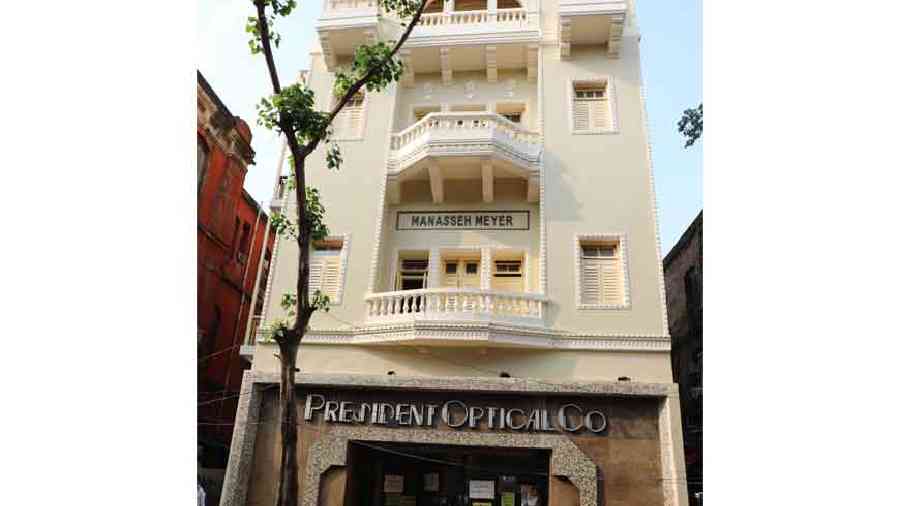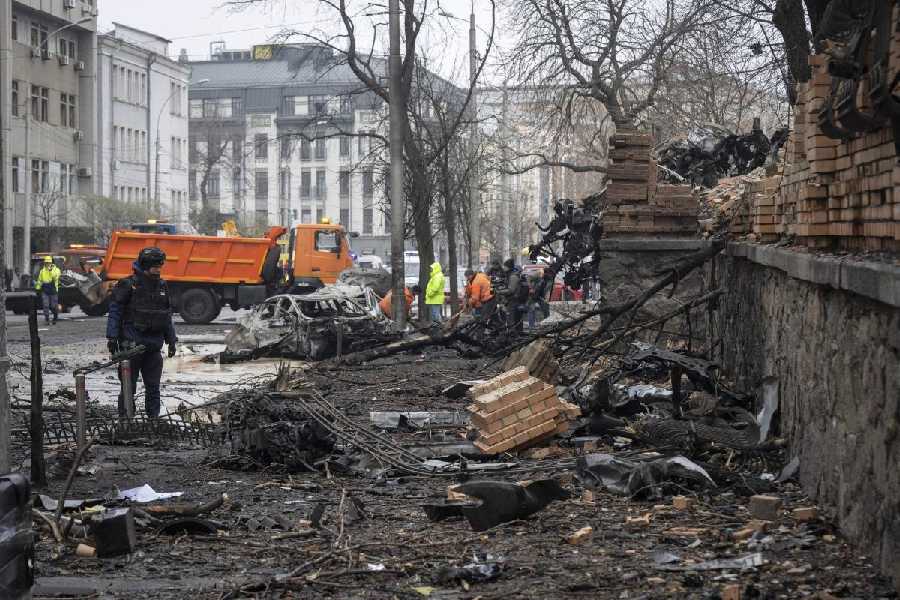The Manasseh Meyer building, a Grade I heritage building, is located at 306 B.B. Ganguly Street. It belonged to the Calcutta Police from 1939-1945 and was in a dilapidated state for many years. Last year, the police restored it impeccably, just as they have numerous other police precincts across the city. These restorations have gone a long way in conserving the significant colonial architectural legacy of Calcutta. The three-storied, light beige building with white accents has three distinctive tiers of pillared verandahs gracing each floor above the ground level. The third and topmost floor has an arch over the verandah. Narrow in the front but running deep, the Manasseh Meyer building retains its original name and currently serves as an annexe of Lal Bazar.
Manasseh Meyer’s name is now unknown to many in Calcutta. But it is well known in Singapore. Meyer is associated with the iconic Adelphi Hotel, one of the largest and oldest hotels in Singapore, immortalised in the works of Somerset Maugham. Seaview Hotel in Katong, considered one of the three top hotels on the island, was originally owned by him. He was also a major donor to Raffles College, now the National University of Singapore. A pious Jew, Sir Reuben Manasseh Meyer built two synagogues and Jewish schools in Singapore that still flourish.
His story mirrors those of the many Baghdadi Jews who moved fluidly across the port cities of ‘Jewish Asia’ that stretched from Baghdad to Shanghai in the late 19th to the early 20th centuries. While the Baghdadis established businesses across this expanse, a family or two typically became the driving economic forces of cities, such as the Ezra family in Calcutta, the Sassoons in Bombay, the Cohen Brothers in Rangoon, Manasseh Meyer in Singapore, the Kadoories and Emanuel Belilios in Hong Kong and Shanghai. These Jewish Asian tycoons initially made their money in the opium trade. They then branched out into other commodities, including cotton, indigo, and jute, and became major landowners, owning some of the choicest properties in each of these cities.
Reuben Manasseh Meyer was born in Baghdad in1846 and came to Calcutta as a young boy. He studied in Calcutta but was sent to Singapore where his maternal uncle had established himself. His uncle brought Reuben back to Calcutta in 1864 as a book-keeper apprentice in his business and to learn Hebrew and Arabic. In 1867, Reuben set out for Burma to establish his own business. After travelling extensively, he returned to Singapore in 1873 to start Meyer Brothers, his import-export business in opium that flourished. He soon expanded into real estate and built the first block of flats in Singapore. At one point, it was said that he owned three quarters of the island.
During the tumultuous years of World War II, the Jews of Shanghai and Burma fled the Japanese. Many found shelter and support in Calcutta and Singapore. By the 1950s, many Baghdadis, including the Baghdadi Jews of Calcutta, sought economic opportunities in the West. The synagogues and Jewish schools they built still stand, street names still bear their names, but most of the iconic properties they owned and built were bought or taken over depending on the politics of the respective countries where they had made their mark. In Singapore and Hong Kong, the synagogues and schools cater to a few hundred expatriate Jews. Few Baghdadi Jews remain in these cities, the Kadoories of Hong Kong being the exception.
The restoration of the Manasseh Meyer building in Calcutta throws light on the mercantile history of Jewish Asia of which Calcutta was a crucial part. Calcutta’s synagogues, schools (including the Jewish Girls’ School of which Manasseh Meyer was a proponent and an elected member of the first committee set up to establish it in1881), the sprawling cemetery in Narkeldanga and street names — Synagogue street, Ezra street and, now, the Manasseh Meyer building —recall Calcutta’s cosmopolitan heritage and its pride of place among other colonial cities across the Far East.
Jael Silliman is a writer of fiction and non-fiction










